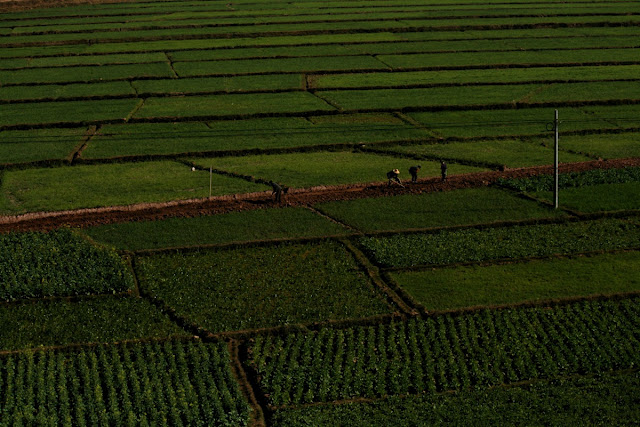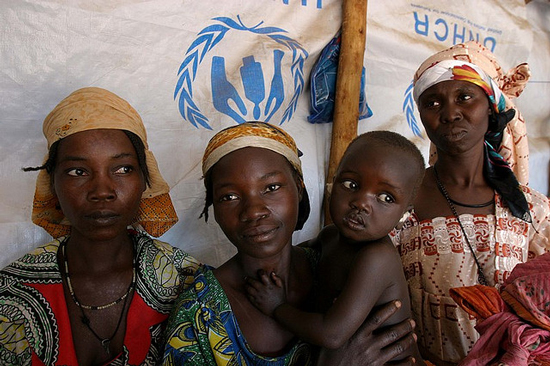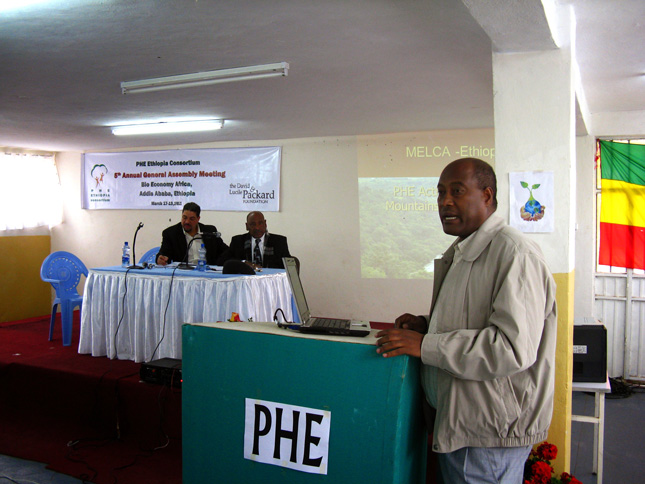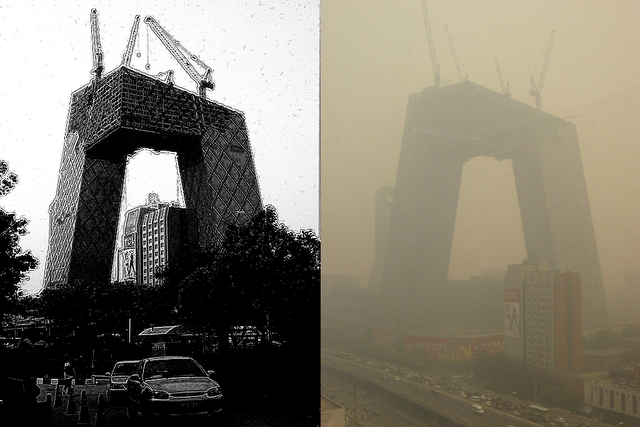-
Our Shared Future: Environmental Pathways to Peace
›Download Our Shared Future: Environmental Pathways to Peace from the Wilson Center.
How does globalization affect natural resource issues such as water on local, national, and international levels? Can our common dependence on these stressed resources be a force for bringing people together rather than dividing us? What lessons can we learn from sharing insights from communities at these very different levels of organization?
Pathways to Peace
In January 2010, the Woodrow Wilson International Center for Scholars and the Fetzer Institute invited 22 scholars and practitioners to a two-day seminar to discuss these questions and the deep connection between caring for the environment and caring for community. Pathways to Peace: Defining Community in the Age of Globalization was the second seminar in a three-year initiative to combine scholarship, public policy, and local practice to articulate and support global conflict transformation and reconciliation in communities throughout the world. Examining the effect of environmental peacebuilding on communities, the discussion explored how governments, NGOs, the private sector, and other interested parties can generate positive outcomes while minimizing negative ones.
Participants from Canada, Ecuador, Ethiopia, Israel, Kenya, Nepal, Switzerland, the Philippines, and the United States brought to the table a wide range of experience and expertise from diverse fields, including peacebuilding, community building, health care, economic development, conflict resolution, and foundation management. By convening leaders in environmental peacebuilding and community building, the Wilson Center and the Fetzer Institute drew on a wide range of experience and perspectives related to environment, conflict, and peacebuilding practice and research. The group used water access and peacebuilding case studies as a means to enter into dialogue about the challenges of global community engagement.
Shared Waters
In preparation for the seminar, geographer and renowned water expert Aaron Wolf of Oregon State University contributed a paper, “The Enlightenment Rift and Peacebuilding: Rationality, Spirituality, and Shared Waters,” in which he laid out the complicated, sometimes conflictual, and often surprisingly collaborative aspects of negotiations over water resources. For Wolf, given water’s life-sustaining quality but limited quantity, it seems intuitive that “water should be the most conflictive of resources.” However, he maintains that “while press reports of international waters often focus on conflict, what has been more encouraging is that, throughout the world, water also induces cooperation, even in particularly hostile basins, and even as disputes rage over other issues…there is a long, and in many ways deeper, history of water-related cooperation.”
On this foundation, Wolf illustrates four stages of water conflict: from adversarial, to reflective, to integrative, to action. Lessons from the “spiritual understanding of water conflict transformation” he says, “offer not only new understanding of current disputes, but also models, tools, and strategies for more effective water conflict management and transformation.”
Seminar participants used Wolf’s paper as a starting point from which to write short papers based on their own expertise and experience. From Kenya to Nepal to Harlem, participants shared their perspectives on the challenges and promises of environmental issues, community building and organizing, and peacebuilding.
This report, Our Shared Future: Environmental Pathways to Peace, draws from the rich dialogue of the seminar and seminar papers to share the broad range of experience and the insight of the participants. To learn more about these remarkable programs and the people working on natural resources, peacebuilding, and community development, see the complete list of papers on page 120, which can be downloaded from the Wilson Center. -
John Warburton, China Environment Series
UK Helping to Relieve Climate-Related Stress on China’s Agriculture
›The UK and China have been working together since 2001 to better understand how China is going to be impacted by climate change, particularly in the agriculture sector. But understanding must also lead to action, with adaptation needing to be integrated into the development process at both national and local levels. This work, which is ongoing, will increasingly provide a model for how to approach adaptation in other countries.
In my opinion, this work has also contributed to the realization among top-level Chinese officials that it is important to take global action on climate change as part of the international negotiation process; until very recently, most of the international engagement with China has focused on mitigation, with the result that the very real and urgent challenges that China faces in regards to its own adaptation needs have been sidelined.
Another Stressor for Chinese Agriculture
China’s Polices and Actions for Addressing Climate Change, issued in October 2008, state:The impacts of future climate change on agriculture and livestock industry will be mainly adverse. It is likely there will be a drop in the yield of three major crops — wheat, rice and corn; …enlarged scope of crop diseases and insect outbreaks; [and] increased desertification.
Even though assessing the likely impacts of climate change on crop yields is a complicated process, with some evidence showing that in some areas crops may benefit if agricultural technology can keep pace, the overall picture is grim for China.
Potential climate impacts are very worrying for a country which already faces so many other challenges within the agricultural sector, among them the facts that it has to feed nearly one quarter of the world’s population (1.3 billion people) with only seven percent of the world’s arable land; that it has only one-quarter of the world’s average per capita water distribution (one-tenth in large parts of northern China, which are heavily dependent upon agriculture); and that the agricultural land base is fast diminishing due to urbanization, industrialization, and the conversion of arable land to grasslands and forest.
Collaboration on Adaptation
Much of the evidence that supports the understanding of the likely adverse impacts on Chinese agriculture from climate change stems from collaborative work between the UK and China which started in 2001. A joint project, Impacts of Climate Change on Chinese Agriculture (ICCCA), has combined cutting-edge scientific research with practical development policy advice. Although national in scope, the project included pilot work to develop a stakeholder based approach to adaptation in the Ningxia region of northcentral China. ICCCA was successfully completed in December 2008. The UK-China collaboration is now continuing with a major new project which is going beyond agriculture and looking at additional socioeconomic sectors and geographic areas.
Continue reading in the China Environment Forum’s China Environment Series 11, from the Wilson Center. Other articles in the series can be found on CEF’s website.
John Warburton is a DFID senior environment adviser and is currently based in Beijing.
Photo Credit: “Field,” courtesy of flickr user totomaru. -
Working With the Private Sector to Improve Maternal, Newborn, and Child Health
Innovations From Development to Delivery
›“Challenging and dynamic partnerships [with the private sector] are difficult to pull together, but when you look at sustainability, impact, and effectiveness, they can also be great levers of change,” said Kari Stoever, senior advisor for global advocacy at the Global Alliance for Improved Nutrition (GAIN) at the Wilson Center on March 22. [Video Below]
Stoever was joined by panelists Laura McLaughlin, environmental engineer at Cascade Designs, Inc., Hugh Chang, director of special initiatives at the NGO PATH, and Laura Birx, senior food security and nutrition specialist at the U.S. Agency for International Development (USAID) for a discussion of the private sector’s role in developing innovative health technologies to increase access to safe water, prevent infectious diseases, and improve maternal health nutrition.
Collaborating to Provide Safe Water
“NGOs have different strengths and different perspectives from the private sector, and we’ve found an area where we can really complement each other,” said McLaughlin. Cascade Designs, Inc., collaborated with PATH to create a smart electrochlorinator, which produces a chlorine solution to purify water using just salt water and a simple battery, because “we wanted to make a bigger difference than we could do with philanthropy alone,” said McLaughlin.
“Products need to be designed specifically for the end user, particularly for women and children, who are often times left out of the design process,” said McLaughlin. Cascade’s smart electrochlorinator was designed with this in mind. One charged battery can treat up to 40,000 liters of water, 200 liters at a time. The device is easy to use, requires simple resources, is significantly more affordable than existing solutions, and lends itself to an entrepreneurial business model that can deliver safe water to small community households. The current prototype is being field-tested in 10 countries globally, with the aim of providing safe water in resource-poor communities while generating income for local entrepreneurs.
The PATH-Cascade partnership was successful in part because it combined “private-sector expertise in efficiency, cost-effectiveness, and meeting market demands” with knowledge about the health needs in developing countries, said McLaughlin. By “pushing each other to a common end goal, this partnership really multiplied our strengths.”
Engaging the Private Sector
“One of the reasons we work closely with the private sector…is because we recognize an efficiency of resource usage that comes with building bridges between the public sector and the private sector,” said Chang of PATH’s work with Cascade and others. Engaging the private sector to advance health technologies can complement PATH’s goals, like encouraging healthy behaviors and strengthening health systems, he said. “But, we are not averse to profits,” he added, stressing that partnerships with NGOs can be mutually beneficial. “We understand for this to be sustainable, these companies need to make a profit.”
PATH is working with the private sector to develop injection and vaccine technologies that “produce a product that not only benefits the recipient of the vaccine but also produces a revenue stream,” said Chang. The SoloShot, for example, is a low-cost, disposable syringe that locks after a single injection, preventing needle reuse and contamination that can increase the risk of HIV, hepatitis B, and other infections. To address the challenge of maintaining the proper refrigeration of vaccines in low-resource settings, private sector collaboration has helped to develop the vaccine vial monitor (a sticker that changes color when a vaccine has been exposed to too much heat) and to create more stable vaccine formulas that are less vulnerable to extreme temperatures. “By combining innovation with on-the-ground presence,” concluded Chang, “private sector engagement can be a powerful tool for global health.”
A “Win-Win Partnership”
“There is a tremendous role for the private sector to play in the intersection of agriculture and health as they relate to nutrition,” said Birx. Engaging the private sector can be a “win-win partnership,” she said. The Obama Administration’s hunger initiative, Feed the Future, for example, uses the resources, expertise, and innovation of the private sector to encourage sustainable, market-driven approaches to reducing poverty and food insecurity, said Birx.
USAID sees innovation as a “research-to-use continuum,” said Birx. “When we look at innovation, it’s not just about the development of a specific product, but about the entire system that goes around that product,” she added. New technologies must not only respond to a major development challenge in poor and rural communities but need to be affordable, culturally appropriate, gender sensitive, easy to use, and durable.
But solutions don’t have to be complicated. “Often times it’s about a really simple technology that can improve accessibility,” said Birx. The nevirapine pouch, for example, a simple foil packet that allows health care workers to give women single doses of nevirapine syrup, can reduce the risk of mother-to-child transmission of HIV by more than half.
“There’s a lot of excitement, but we need to do some serious work to capitalize on [it],” said Birx. Moving forward, health, development, and private-sector organizations must work together to create innovative financing mechanisms, build institutions in developing countries, and encourage enabling policy environments.
Sources: PATH.
Photo Credit: “Mission to Ouanda Djallé,” courtesy of flickr user hdptcar. -
The Impact of Environmental Change and Geography on Conflict
›“Environmental Change, Strategic Foresight, and Impacts on Military Power,” published in Parameters by Chad M. Briggs, the Minerva Chair of Energy and Environmental Security at the Air University, USAF, tackles the changing definition of “environmental security” and how the concept can help planners better prepare for the effects of climate change and an elevated focus on energy security. New potentially destabilizing issues like glacial melt, sea-level rise, and Arctic ice melt are on the horizon, writes Briggs. China and others are already planning for these events, and it’s important that the United States does the same, starting with a greater appreciation for the impact of environmental security on vulnerability and risk. “Due to past practices and bureaucratic stovepipes, implementation is limited more by initiative and imagination than actual resources,” he writes.
Clionadh Raleigh of Trinity College Dublin and the International Peace Research Institute finds in “Seeing the Forest for the Trees: Does Physical Geography Affect a State’s Conflict Risk?” that a region’s geography does not have a uniform effect on its likelihood of experiencing conflict. Raleigh’s conclusions, published in International Interactions, run counter to traditional histories which often emphasize the importance of physical geography, specifically with regard to civil war and insurgencies. Focusing on the Great Lakes region of Africa, Raleigh finds that other factors – like how populated an area is and its proximity to valuable natural resources – correlate higher with an area’s propensity for violence than any other factor. -
Integrated Approach Helps “Model Farmers” Increase Productivity in Ethiopia
›March 24, 2011 // By Schuyler Null
To reach the village of Grar Gaber from Addis Ababa, you drive up over the Entoto Mountains overlooking the capital then motor down two hours of new Japanese-built highway to the town of Fiche. From there it’s 20 minutes on a broken dirt road across rocky hills. I was joined there by about 20 others from the PHE Ethiopia Consortium’s general assembly (see day one and day two coverage here) and Population Action International, to visit an integrated population, health, and environment (PHE) development program run by LEM Ethiopia.
-
The Continuing Challenges of Integrated Development
›March 20, 2011 // By Schuyler Null
“How are we going to feed all these mouths?” asked Bekele Hambissa, director of the Environmental Protection and Development Organization in Addis, on day two of the PHE Ethiopia Consortium general assembly (read about day one here). Environmental resources are directly tied to Ethiopia’s population growth, said Hambissa, during a discussion of balancing efforts to address population growth, environment, and livelihoods. While poverty alleviation is an important goal of population, health, and environment integration (PHE), it must be environmentally sustainable, he said.
-
Congressional Hearing: Clean Water Access Is a Global Crisis, Human Right, and National Security Issue
›March 17, 2011 // By Hannah MarquseeUnsafe drinking water causes nearly 1.8 million deaths each year from diarrhea, “a number that dwarfs the casualties associated with violent conflict,” said U.S. Representative James McGovern at a congressional human rights commission hearing earlier this month on water as a basic right. Nearly all of these deaths are children under the age of five, he said. “This is a war against families, children, and women on an ongoing basis,” said Representative Earl Blumenauer, also speaking at the hearing, titled “Realizing the Right to Safe Water and Sanitation.”
There are currently 884 million people in the world without access to safe drinking water, according to UNICEF, and 2.6 billion without improved sanitation. As population growth and climate change place added stress on fresh-water systems, by 2025, two thirds of the world’s population will live in water-stressed conditions, according to the Food and Agriculture Organization. “This is a severe global crisis,” said McGovern.
“A Human Right”
With 2011 World Water Day only weeks away, the hearing harkened back to Secretary Clinton’s widely quoted statement from World Water Day 2010, marking a commitment by the Obama administration to address global water issues:It’s not every day you find an issue where effective diplomacy and development will allow you to save millions of lives, feed the hungry, empower women, advance our national security interests, protect the environment, and demonstrate to billions of people that the United States cares. Water is that issue.
Four months after that statement, the UN passed a resolution to make access to water and sanitation a human right, not just a development priority. Said Catarina de Albuquerque, a UN independent expert who testified at this month’s congressional hearing, the resolution stipulates that water must be “available, accessible, affordable, acceptable and safe.” A “right to water” is an important “sign of political will,” that will place increased obligations on governments to improve access to water and sanitation, she said. But in the meantime, for the millions without access to safe water, “there is no change.”
According to the UN, the world is on track to meet the Millennium Development Goal target of halving the number of people without access to an improved water source by 2015. But de Albuquerque noted that the reality is not quite so optimistic. On a UN fact-finding mission, she encountered at least one family who by UN definitions had access to an “improved drinking water source,” yet their tap water was literally black. “Water quality is not being monitored” and for many of the people who do have access, it is simply “undrinkable,” she said.
In developed countries as well, there are significant barriers to access, especially for marginalized communities. On a recent mission to the United States, de Albuquerque found that America’s “voiceless” – people of color, Native Americans, and the homeless – face significant discrimination in access to water. “Society closes its eyes to them,” she said. Thirteen percent of Native Americans lack access to safe water, in comparison to 0.6 percent of non-native Americans, she said in a statement to the press releasing her findings. And in Boston, “for every one percent increase in the city ward’s percentage of people of color, the number of threatened cut-offs increases by four percent.” To make the necessary improvements to fill these gaps in America’s aging water infrastructure would cost $4 to $6 billion annually, she said.
A National Security Issue
Water “is a security issue as well as a human development issue,” said Blumenauer. Since, according to UNEP, 40 percent of the world relies on river basins that share two or more political boundaries, water management has enormous potential for both conflict and cooperation. Echoing Clinton’s World Water Day statement, McGovern championed the cross-cutting nature of water:The right to water is inextricably linked with other basic rights…including the right to food, the right to health, and the right to education.
The burden of collecting water in underdeveloped countries often creates a gender gap and exposes women and girls to violence and rape, he said. And it “has been the basis for many territorial and violent disputes between various peoples and even nations.”
Last month, a staff report by the Senate Foreign Relations Committee expressed a similar sentiment with the publication of their report, Avoiding Water Wars: Water Scarcity and Central Asia’s Growing Importance for Stability in Afghanistan and Pakistan. The report commends the Obama administration for recognizing the importance of water: “For the first time, senior government officials are recognizing the critical role that sound water management must play in achieving our foreign policy goals and in protecting our national security.” However, by exclusively focusing on Pakistan and Afghanistan’s water issues and “neglecting the interconnectivity of water issues between Central and South Asia, the U.S. approach could exacerbate regional tensions,” the report says.
To be more strategic about water assistance, the report recommends the United States: (1) provide technical support in data collection to better manage water; (2) help increase water efficiency and reduce demand for water; (3) recognize the transboundary nature of water issues and “provide holistic solutions;” and (4) “safeguard institutions against shocks to water supply and demand.”
Moving Forward
The Obama administration’s commitment to water issues, the UN’s recognition of water as a human right, and the 2005 Water for the Poor Act have all been important steps towards fulfilling the pledge of making access to safe water a human right. “We’ve come a long way,” Blumenauer (who authored the Water for the Poor Act) said at the hearing, but there is still significant work ahead.
“We’re going to have to be more strategic moving forward” in order to meet global water shortages, said Aaron Salzberg, special coordinator for water resources for the U.S. Department of State who testified at the hearing. Salzberg recommended that the U.S. government take steps to integrate water management with the food and health sectors; build political will; mobilize financial support; promote science and technology; and form partnerships with other governments and aid organizations. The United States must also “be smarter” about allocating funds based on the dual criteria of “need” and “opportunity.” Balancing efforts with partners to find out which countries have the greatest need and the least resources will allow limited U.S. funds to make the deepest impact, he said.
John Oldfield, managing director of the WASH Advocacy Initiative, urged Congress to increase funding for foreign assistance, continue appropriations for the Water for the Poor Act, and improve the effectiveness of existing water, sanitation, and hygiene (WASH) assistance. “Each dollar invested in water and sanitation leads to an 8:1 return from reduced healthcare costs and time savings,” he said. “The world does not need to bury millions more of its children in the coming years when we know how to prevent waterborne disease today.”
Sources: FAO, UNEP, UNICEF, United Nations, WHO.
Image Credit: Adapted from “School girl drinks water from new handpump,” courtesy of flickr user waterdotorg. -
Hu Angang and Liang Jiaochen, ChinaDialogue
China’s Green Five-Year Plan: Making “Ecological Security” a National Strategy
›March 16, 2011 // By Wilson Center StaffThe original version of this article, by Hu Angang and Liang Jiaochen, appeared on ChinaDialogue.
Five-year plans (FYPs), which set down and clarify national strategy, are one of China’s most important policy tools. Just as they have helped to drive China’s economic success over recent decades, so they will play a pivotal role in putting the country on a green development path. The 12th Five-Year Plan, now under consideration by the National People’s Congress, marks the beginning of that process in earnest (Editor’s note: Since this was originally published, the National People’s Congress voted in favor of the plan).
FYPs embody the concept of progressing by degrees, or developing step by step. This approach has been one of the driving forces behind China’s economic progress in recent decades and will now provide the platform for its green development. It is the methodology underpinning China’s socialist modernization: to reach a new step in development every five years. Unstinting efforts over a number of FYPs have driven China’s transformation.
Climate change presents a long-term and all-encompassing challenge for China. It demands a long-term development strategy and broad goals, as well as near-term action plans and concrete policies. Combining these is precisely the idea behind FYPs.
At the global climate change summit in Copenhagen in 2009, China demonstrated it has the long-term political will to respond to climate change; to work with the world to limit global temperatures to no more than two degrees Celsius above pre-industrial temperatures (the goal set out in the Copenhagen Accord). In November that year, the Chinese government formally put forward its medium-term targets on climate change: a reduction in energy intensity of 40 percent to 45 percent on 2005 levels by 2020, and generation of 15 percent of energy from non-fossil fuel sources by the same date.
Continue reading on ChinaDialogue.
Hu Angang is a professor at the Chinese Academy of Sciences and Tsinghua University and the director of the Centre for China Study. He has worked as the chief editor for China Studies Report, a circulated reference for senior officials. Liang Jiaochen is a PhD student at Tsinghua University’s School of Public Policy and Management.
Sources: Business Green, UN Framework Convention on Climate Change, World Resources Institute.
Photo Credit: Adapted from “China: CREME,” courtesy of flickr user IFC Infrastructure (Alejandro Perez/IFC).
Showing posts from category water.











